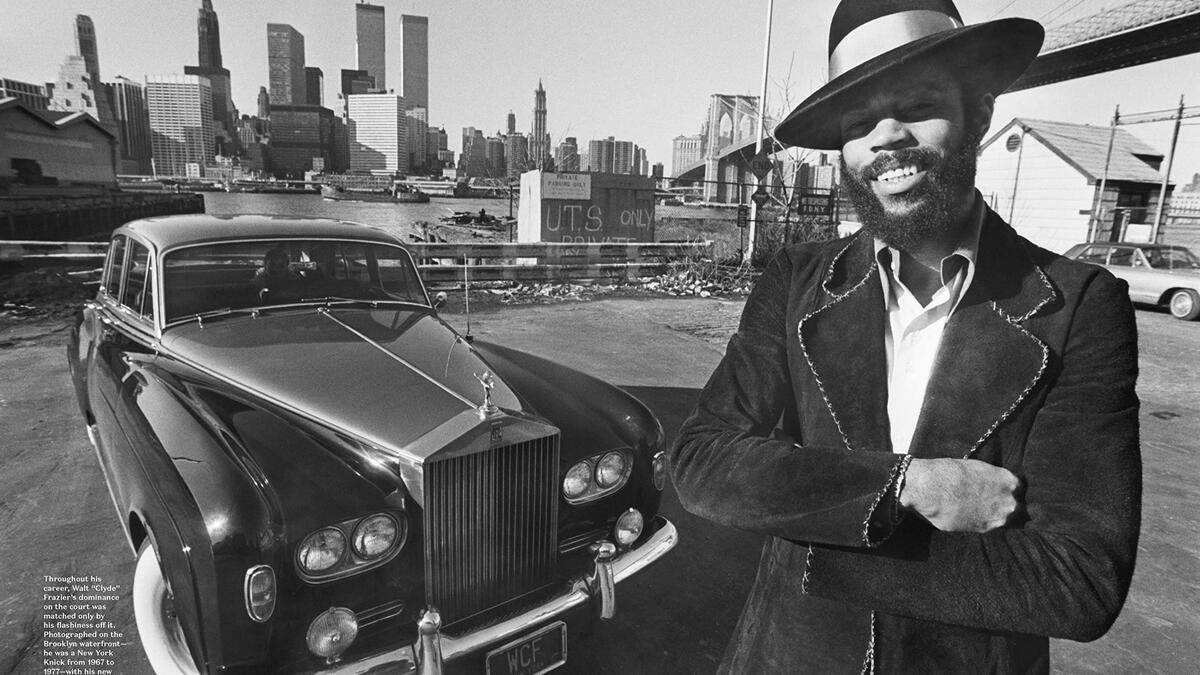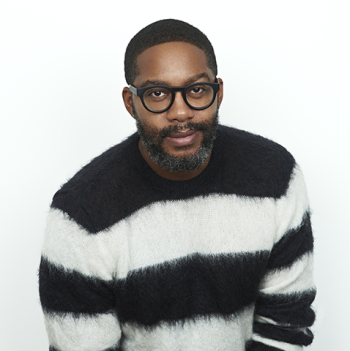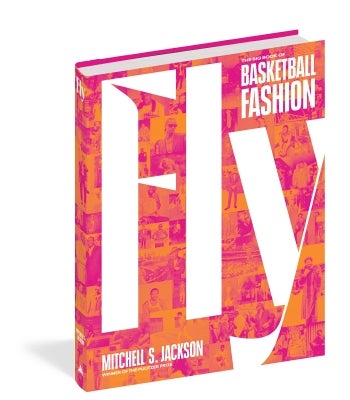Pulitzer Prize-winning ASU professor pens coffee table book about NBA fashion

Walt “Clyde” Frazier, who was with the New York Knicks from 1967–77, photographed on the Brooklyn waterfront with his Rolls-Royce in 1973. From the book "Fly," courtesy Artisan Books
Mitchell Jackson has been an NBA fan for as long as he can remember.
He grew up in Portland and was born one year before the Trail Blazers won their one and only NBA championship in 1977.
“As a Portlander, it’s a special relationship because while I was there, they were our only major sports team,” said Jackson, a Pulitzer Prize winner and the John O. Whiteman Dean’s Distinguished Professor in Arizona State University’s College of Liberal Arts and Sciences. “So the Blazers really meant something to us.”
So when the idea of writing a book about NBA fashion was broached to him, he was immediately interested.
“They brought the idea to me knowing that I was already a basketball fan and that I love fashion,” Jackson said. “It just seemed like an east fit. They pitched it as a really short, almost inconsequential book that would take a couple of weeks of my time. It turned out to be years and lot more effort than I anticipated.”
That result of that effort? "Fly: The Big Book Of Basketball Fashion," a photo-heavy coffee table book that will be released Sept. 5.
MORE: New York Times book review
ASU News talked to Jackson about the book.
Editor's note: The following interview has been edited for length and clarity.
Question: How would you describe the book?
Answer: I would say that it is a chronicle of NBA fashion, but as much as it is that, it's also a kind of cultural capsule for the ways in which history and culture shape fashion, and then vice versa.
Q: You write in the book that the hip-hop culture heavily influenced the way NBA players think of fashion. In what way?
A: Hip-hop is Black and brown fashion, right? It was born in the Bronx. Everybody knows the story. So for as long as hip-hop has been around, the purveyors and the people who define what hip-hop is have always been Black and brown people from disenfranchised neighborhoods. And those are the same people who comprise the NBA. We’re really talking a cultural thing. So that influence goes back and forth, but really, it’s the same neighborhood dudes influencing each other.
Q: You had Black players in the past who really showed off their fashion choices, like Walt Frazier and Julius Erving, but it seems to be almost an industry now for NBA players. What changed?
A: The platform. They (players in the 1970s and 1980s) didn’t have social media. If you happen to see those photos of Dr. J and Walt Frazier in the book, those are posed shots by professional photographers. A lot had to go into the casual fan being able to see those. Now, a player can create that kind of moment for themselves all day, whenever they want. I also think the embracing of fashion by brands didn’t exist back then.
So just the avenues for social media, the brand collaborations and — as we talked about the connection between sports and fashion — hip-hop kind of paved the way for making yourself into a brand. And I think that the NBA, which is the smartest professional league in terms of marketing their players, was very savvy in allowing their players to demonstrate their individualism in this way.
Q: You mentioned social media. How big of a factor has Instagram played in NBA fashion?
A: It’s really become its own cottage industry. There are so many websites or handles dedicated to just posting what the players are wearing. It really has become corporatized in a way. The critique could be that this is just late-stage capitalism. Designers are seeking out players to wear their clothes. I don't know how much they get paid, though.
Q: Among NBA players is there a competition as to who looks the best?
A: Absolutely. These guys are all competitors. If you see those documentaries of Michael Jordan and Kobe Bryant, they wanted to win at everything. I don’t hang out with NBA players anymore, but I’m sure it’s, how many cars and what kind of cars do you have? Or how big is your house? So they’re finding ways to delineate themselves. I think the difference between today’s players and players in the past is that you can actually be a star in fashion and never become a star on the court. The guys you mentioned, like Walt Frazier and Julius Erving, were NBA stars. Now you can be a guy who basically never gets off the bench but everybody knows you because of your fashion.
Q: Because of social media, right?
A: Yeah, but not just social media. You can have relationships with brands. We become aware of these players usually through social media, but then all these other avenues open up, where they’re in commercials or doing other things and becoming a brand themselves.
Q: Are more players using fashion to make political statements than we’ve seen in the past?
A: No question. When Black Lives Matter began as a national movement, players were wearing Eric Garner T-shirts and Trayvon Martin hoodies. I think maybe one of the first viral moments was LeBron James and the Miami Heat wearing those Trayvon hoodies. So, yeah.
Q: Former NBA commissioner David Stern instituted a dress code in 2005 that barred, among other things, players wearing T-shirts and shorts to games. There was a lot of resentment among players back then, but in retrospect, did that sort of ignite the NBA fashion industry?
A: Yes, because they had to wear dress clothes, and in dress clothes, you couldn’t express your individuality that was connected directly to the culture. So you had to be creative and figure it out. And I think that pointed the stars toward high-end brands. So now you’re wearing the high-end European brands and they’re hiring stylists, and sooner or later they end up at a fashion show. So I think Stern pointed them in a direction that created what we have now, even though I think it was punitive against the culture.
Q: This may be an impossible question to answer, but I have to ask it. Who do you think is the best-dressed player in the NBA?
A: I don’t know if I have a favorite, but I have different styles. For a Bohemian-kind-of-chic player, I like Jerami Grant of the Trail Blazers. If you said, “What does a rich basketball player look like?” that’s LeBron James. That’s everything from his jewelry to his clothes. He always has on a bunch of bracelets or earrings. He always wears the richest clothes, as he should, right? I mean, he’s the game’s first active billionaire. So I would say those two players.
And, if you’re talking streetwear, I would say (former Phoenix Suns player) P.J. Tucker. He’s not only a really great representative of streetwear fashion, but he is also a representative of the way in which your fashion can give you a certain cachet that your play doesn’t. He’s a starter, and he was on an NBA championship team (with the Milwaukee Bucks in 2021) but no one is running around saying P.J. Tucker is an NBA star. But he is in the fashion world.
Upcoming events:
7–8:30 p.m., Thursday, Sept. 14
ASU California Center Broadway
Mitchell S. Jackson in Conversation with Marc J. Spears
7–8:30 p.m., Sunday, Oct. 15
Phoenix Art Museum
Top photo: Walt “Clyde” Frazier, who was with the New York Knicks from 1967–77, photographed on the Brooklyn waterfront with his Rolls-Royce in 1973. From the book "Fly," courtesy Artisan Books
More Arts, humanities and education

ASU alum's humanities background led to fulfilling job with the governor's office
As a student, Arizona State University alumna Sambo Dul was a triple major in Spanish, political science and economics. After graduating, she leveraged the skills she cultivated in college —…

ASU English professor directs new Native play 'Antíkoni'
Over the last three years, Madeline Sayet toured the United States to tell her story in the autobiographical solo-performance play “Where We Belong.” Now, the clinical associate professor in…

ASU student finds connection to his family's history in dance archives
First-year graduate student Garrett Keeto was visiting the Cross-Cultural Dance Resources Collections at Arizona State University as part of a course project when he discovered something unexpected:…

